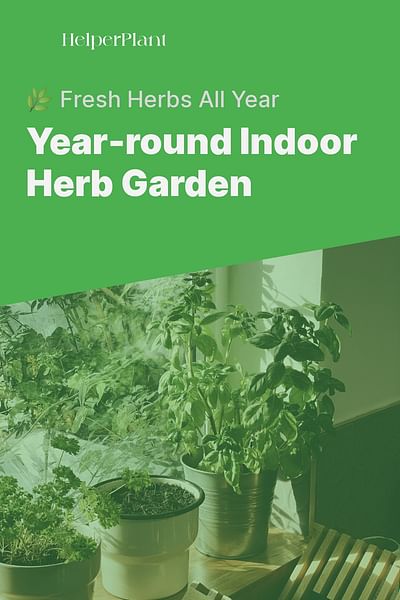Cecelia is a passionate food enthusiast who enjoys creating culinary masterpieces with organic ingredients. She is a firm believer in the power of companion planting for cultivating nutritious and flavorful dishes. In her downtime, Cecelia can be found nurturing her yoga practice or exploring new places.
Absolutely! Growing an herb garden indoors is a fantastic way to enjoy fresh herbs all year long, regardless of the season. Whether you have limited outdoor space, live in an apartment, or simply want to have easy access to your favorite herbs, an indoor herb garden is a great solution. In this guide, I'll share some tips and tricks to help you successfully grow an herb garden indoors year-round.
First and foremost, choose the right herbs for indoor gardening. Some herbs thrive indoors, while others prefer the great outdoors. Good choices for indoor herb gardening include basil, chives, mint, parsley, cilantro, thyme, and rosemary. These herbs are relatively easy to grow and can adapt well to indoor conditions.
When it comes to containers, make sure they have drainage holes to prevent waterlogging. You can use pots, planters, or even repurpose containers like mason jars or tin cans. Just be sure to provide enough space for the roots to grow. Additionally, consider using a well-draining potting mix specifically formulated for herbs to ensure proper moisture retention.
Lighting is crucial for indoor herb gardens, as most herbs require at least 6-8 hours of sunlight per day. If you don't have access to sufficient natural light, you can use artificial lighting, such as fluorescent or LED grow lights. Position the lights about 6-12 inches above the plants and keep them on for 12-16 hours a day. This will mimic the sun's natural cycle and provide the necessary light for healthy growth.
Temperature and humidity are also important factors to consider. Most herbs prefer temperatures between 60-70°F (15-21°C). Avoid placing your herb garden near drafts or heat sources, as extreme temperature fluctuations can stress the plants. As for humidity, herbs generally prefer moderate levels. If your home is particularly dry, you can increase humidity by placing a tray filled with water near the plants or using a humidifier.
Watering is a critical aspect of herb gardening. Overwatering can lead to root rot, while underwatering can cause the plants to wither. The key is to keep the soil consistently moist but not soggy. Check the moisture level regularly by sticking your finger about an inch into the soil. If it feels dry, it's time to water. Remember, different herbs have different water requirements, so adjust accordingly.
Lastly, consider companion planting for your indoor herb garden. Companion planting is the practice of growing certain plants together to benefit each other. For example, basil and mint make great companions, as they both repel pests and enhance each other's flavors. On the other hand, cilantro and fennel should be kept apart, as they can inhibit each other's growth.
In conclusion, growing an herb garden indoors year-round is not only possible but also rewarding. With the right herbs, containers, lighting, temperature, and watering, you can enjoy fresh herbs whenever you need them. Don't forget to experiment with companion planting to maximize the benefits of your indoor herb garden. Happy gardening!











